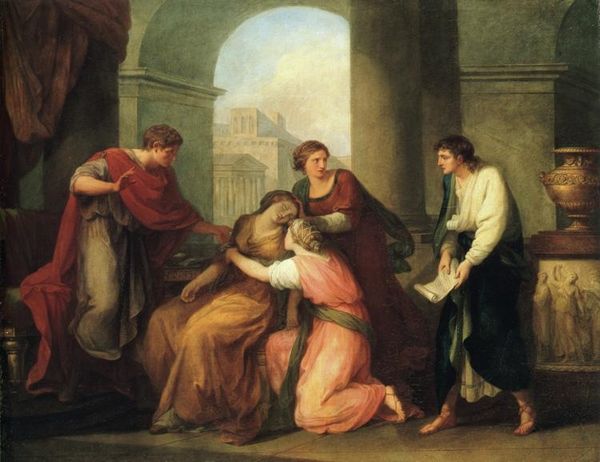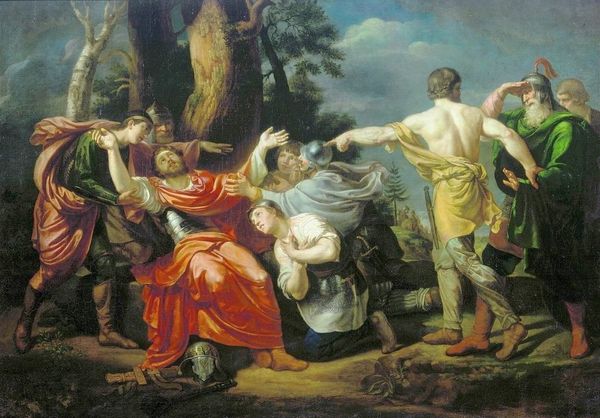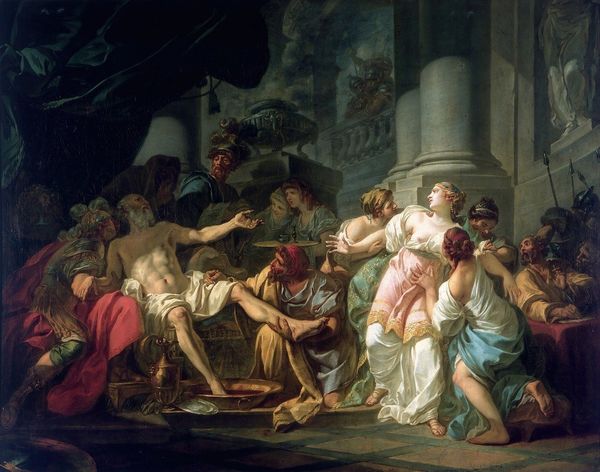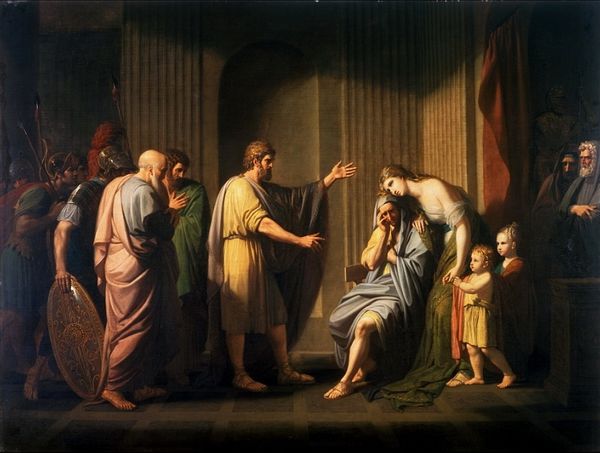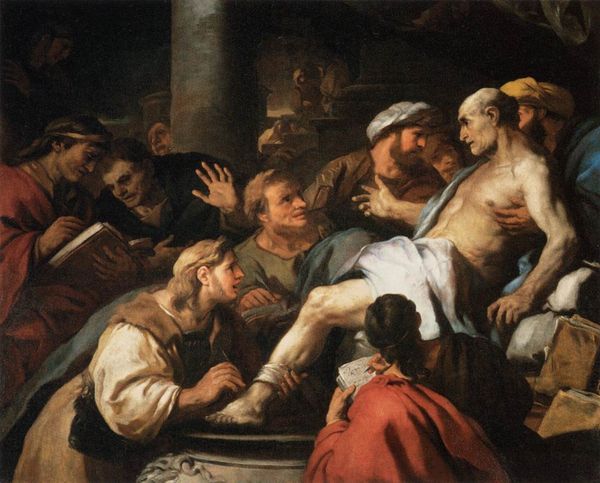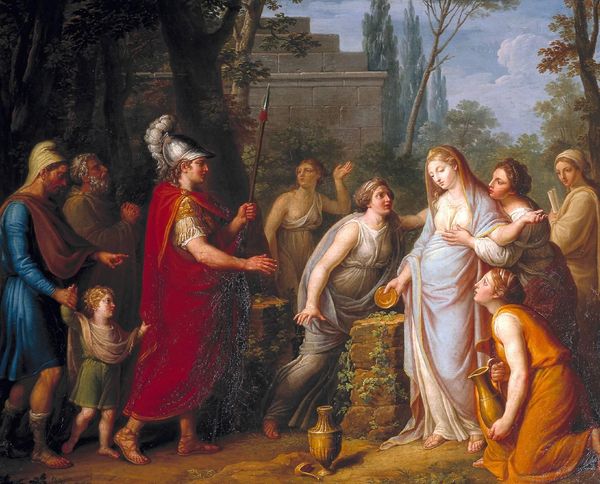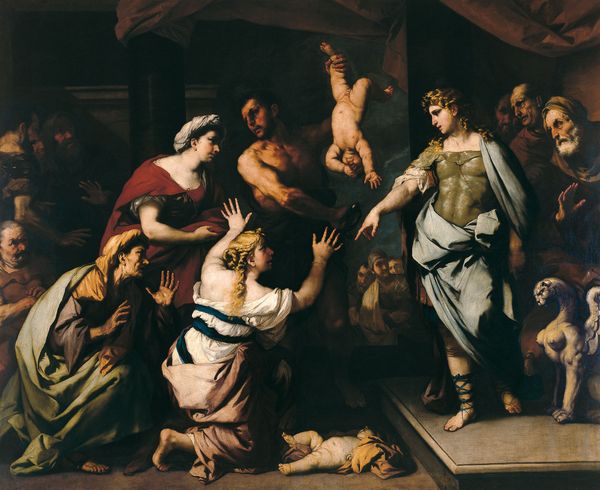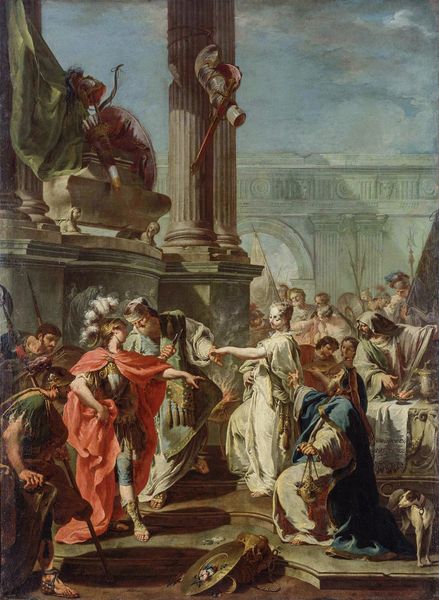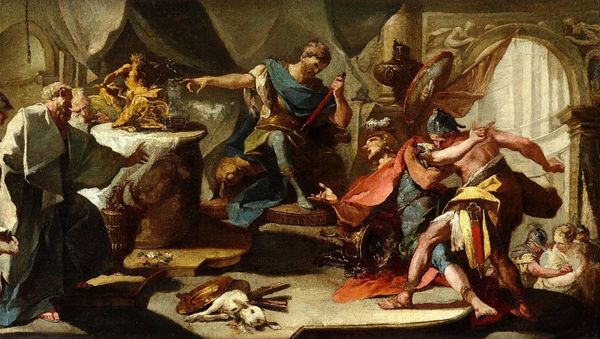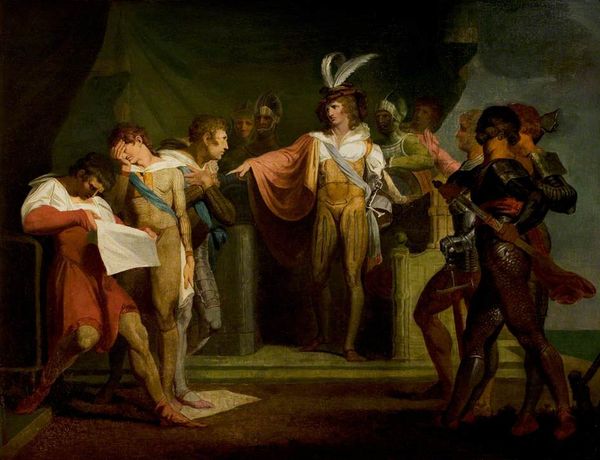
painting, oil-paint
#
portrait
#
neoclacissism
#
painting
#
oil-paint
#
war
#
figuration
#
oil painting
#
roman-mythology
#
mythology
#
painting painterly
#
history-painting
Dimensions: 137 x 178 cm
Copyright: Public domain
Editor: Here we have Angelica Kauffmann's "Hector Calls Paris to the Battle," painted in 1775 using oil. There’s such a striking stillness about it, despite the theme of war. The figures are arranged almost like a classical frieze. What do you see as key to understanding this piece? Curator: Note the composition, Editor. The arrangement of figures, particularly Hector, Paris, and Helen, form a strong horizontal line across the center. This creates a sense of balance, even of restraint, wouldn't you agree? Consider also the deployment of color. Editor: Yes, the colors are quite muted. There isn't the typical dramatic color palette you often see with war themes. It's like the drama is intentionally downplayed, or almost frozen. Is this an important piece within Neoclassicism then? Curator: Precisely. Notice how Kauffmann employs classical elements – the architecture, drapery, even the emotional restraint – to convey a sense of timelessness. Also, let's examine how the light falls; it softly illuminates the figures, emphasizing their forms, giving them volume, and contributing to the overall clarity and idealized beauty valued by Neoclassicism. What does it communicate, this idealization? Editor: The idealization… Perhaps that it elevates the scene from simple history to something more universally meaningful? Or is that the inherent danger of a formalist interpretation – imposing too much order onto art? Curator: It is always a danger, yes. We can only truly attempt objectivity through the meticulous assessment of compositional and structural devices in art. That this is one piece in a large corpus helps provide clarity, wouldn’t you say? Editor: Absolutely. Seeing how these techniques are employed across other Neoclassical paintings certainly provides a deeper appreciation for Kauffmann's intention and skill. Curator: Indeed. This exercise encourages a closer visual dialogue.
Comments
No comments
Be the first to comment and join the conversation on the ultimate creative platform.
